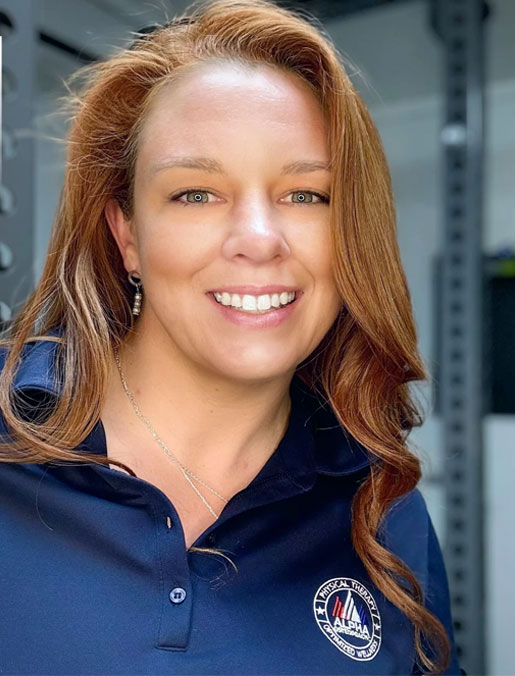Hip Pain

Are you struggling with hip pain that interferes with lifting weights, running, jumping, squatting, climbing stairs, sitting, sleeping, or performing your daily tasks?
Does This Resonate With You?
You expected the pain to subside within a few days or weeks, but it persisted.
You tried various remedies like heating pads, ice, and home TENS units with no relief.
Despite massages, the pain returned shortly afterward.
Medical interventions such as injections or medications provided temporary relief.
Previous attempts at physical therapy failed to alleviate the pain.
You've resorted to avoiding activities that exacerbate the pain to cope with it, haven't you?
We’re Here to Provide Lasting Solutions!
Consult with Brittany A. Forbes, PT, DPT, at Alpha Osteopractic in Hampstead, NC.
Typical Hip Conditions We Address:
- Arthritis
- Labral Tears
- Joint Instability
- Hamstring Strains
- Femoroacetabular Impingement
- Hip Flexor Tendinopathy
- Iliotibial Band (IT Band) Syndrome
- Pre/Post-Op Total Hip Replacement
Primary Causes:
- Impaired Mechanics: Joint stiffness or muscle inflexibility limits range of motion; muscle weakness and imbalance affect posture.
- Injury: Sudden impact or excessive load on the tissue.
- Chronic Compensations: Prior injuries or fear of re-injury lead to avoidance of certain activities while overusing other tissues.
Alpha Osteopractic's Approach:
- Break the pain cycle through education, manual therapy, and enhancing tissue mobility.
- Improve joint, muscle, and nerve mechanics during daily activities and specific exercises.
- Strengthen tissues to withstand demands and prevent re-injury.
Addressing the Hip:
- Correct Low Back and Pelvis Posture.
- Enhance Joint Fluid Exchange/Nutrition (specific manual techniques to optimize joint space).
- Strengthen Gluteal and Hip Rotator Muscle Groups for stability.
- Enhance tissue mobility through various techniques like massage, mobilization, cupping, dry needling, and stretching.
- Alleviate nerve sensitivity through targeted exercises.
- Progress plyometric and functional activities for comprehensive rehabilitation.
Key Concepts to Understand:
- Tissues Heal: The body's natural repair mechanism sometimes needs assistance to transition from inflammation to recovery.
- Pain Correlation: Pain may not correlate with imaging results; tissue damage can exist without pain, and vice versa.
- Post-Exercise Soreness: Soreness indicates tissue adaptation but should guide further training.
- Return to Activities: With proper guidance, mechanics, and progressive loading, returning to desired activities is achievable.
Take Action Now!
Inquire About Availability & Cost at Alpha Osteopractic in Hampstead, NC.